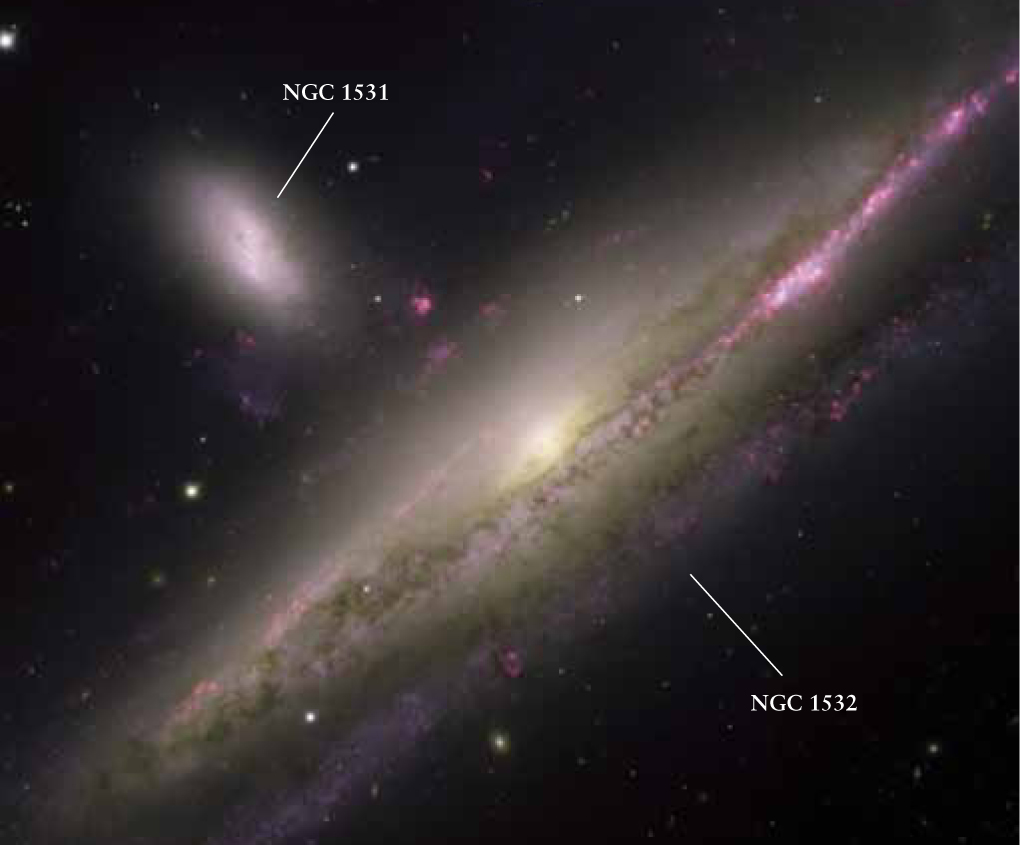CHAPTER
23

Galaxies
LEARNING GOALS
By reading the sections of this chapter, you will learn
| 23–1 | How astronomers first observed other galaxies |
| 23–2 | How astronomers determined the distances to other galaxies |
| 23–3 | The basic types of galaxies |
| 23–4 | What techniques astronomers use to determine distances to remote galaxies |
| 23–5 | How the velocities of remote galaxies tell us that the universe is expanding |
| 23–6 | How galaxies are grouped into clusters and larger structures |
| 23–7 | What happens when galaxies collide |
| 23–8 | What observations indicate the presence of dark matter in other galaxies and clusters |
| 23–9 | How galaxies formed and evolved |
A century ago, most astronomers thought that the entire universe was only a few thousand light-years across and that nothing lay beyond our Milky Way Galaxy. One of the most important discoveries of the twentieth century was that this conception was utterly wrong. We now understand that the Milky Way is just one of billions of galaxies strewn across billions of light-years. The accompanying image shows two of them, denoted by rather mundane catalog numbers (NGC 1531 and NGC 1532) that give no hint to these galaxies’ magnificence.
Some galaxies are spirals like NGC 1532 or the Milky Way, with arching spiral arms that are active sites of star formation. (The bright pink bands in NGC 1532 are H II regions, clouds of excited hydrogen that are set aglow by ultraviolet radiation from freshly formed massive stars.) Others, like NGC 1531, are featureless, ellipse-shaped agglomerations of stars, virtually devoid of interstellar gas and dust. Some galaxies are only one one-hundredth the size and one ten-thousandth the mass of the Milky Way. Others are giants, with 5 times the size and 50 times the mass of the Milky Way. Only about 10% of a typical galaxy’s mass emits radiation of any kind; the remainder is made up of the mysterious dark matter.
Just as most stars are found within galaxies, most galaxies are located in groups and clusters. These clusters of galaxies stretch across the universe, forming huge, lacy patterns. Remarkably, remote clusters of galaxies are receding from us; the greater their distance, the more rapidly they are moving away. This relationship between distance and recessional velocity, called the Hubble law, reveals that our immense universe is expanding. In Chapters 25 and 26 we will learn what this implies about the distant past and remote future of the universe.